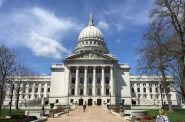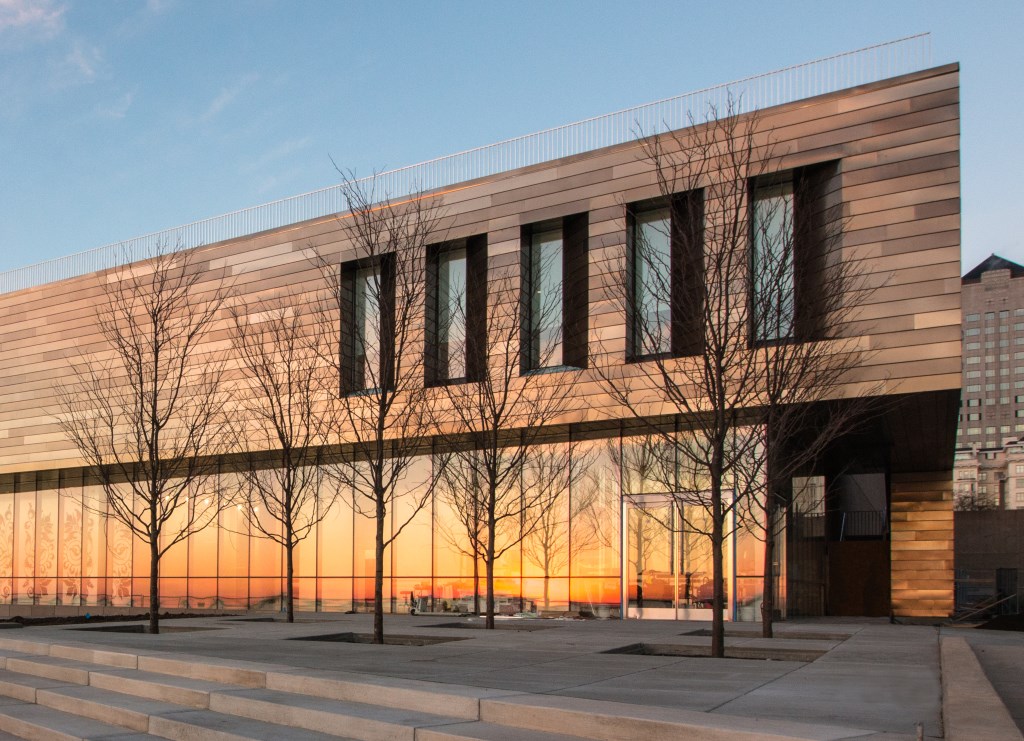Still Controversy Over Art Museum Addition
Journal Sentinel offers inaccurate account of how new addition got built. Here's the real story.
The opening of the addition to the Milwaukee Art Museum is a big event for the city, and the Milwaukee Journal Sentinel appropriately gave it considerable attention, with three stories published Sunday, all by its art critic Mary Louise Schumacher. But Schumacher’s reporting of how the project surmounted “politics” to get the new addition built is a misleading muddle that avoids almost the entire story of what actually happened.
The museum’s director Dan Keegan deserves great credit for having the vision to create this addition, and for managing to raise the money from Milwaukee County and the private sector to finance the project. But he nearly botched the whole thing with his decision to drop an architect’s design for the addition and replace it with a second-rate alternative put together under mysterious circumstances that would have been a disaster for the community.
It was back on April 7, 2014 that Urban Milwaukee broke the news that Jim Shields, arguably the town’s most accomplished architect, had quit the project and hadn’t been involved with it since February 2014. The art museum had by then released a revised design for the project which it credited to Shields, and Schumacher had swallowed that story, reporting that it was Shields’ work.
In fact, as Shields flatly told Urban Milwaukee, the design was not his.
Precisely who created the revised design has never been revealed. Keegan insisted it was Shields but the architect said he had nothing to with that “scheme.” Jim Vander Heiden of HGA (the firm Shields works for) told Urban Milwaukee he had taken on overseeing the project, but was not the designer. As to who was, Vander Heiden said Keegan would have to answer that question.
One source told Urban Milwaukee that David Russick, the museum’s exhibitions designer, was the key person overseeing changes in the building’s configuration and design. Keegan denied this while continuing to insist Shields was somehow designing a project from which he’d withdrawn some two months before.
But five days after the Urban Milwaukee story, Schumacher did an article which now said the design she had attributed to Shields was not his. Shields’ ideas were being dropped from the design, she reported, and “one of the stronger voices behind the changes, according to sources close to the museum and the architect, has been Russick.” In short, a non-architect was now driving the project’s design.
Schumacher doesn’t mention who those “critics” were. The only critic to write a piece “browbeating” the revised design that eliminated most of Shields ideas was Tom Bamberger. His memorable column for Urban Milwaukee on April 10, 2014 suggested the revised design was “a monumental blunder,” something you might find in “an above-average industrial park…It might be a nice printing factory, international call center, or some other anonymous facility tucked away at the end of cul de sac.”
Bamberger’s critique, in short, was the one that described the design as “office park-y,” to use Schumacher’s phrase. And Bamberger argued that Shields original conception was far superior to the botched revision overseen by Keegan. Four days later Matt Wild at Milwaukee Record offered a column calling it “conspicuously uninspiring… design by committee.”
As for Schumacher, she waited until May 4, more than three weeks after Bamberger’s critique, before finally coming out with her take on the revised design, and this is what she wrote: “While it’s tempting to argue the merits of Shields’ better design over the other, I believe the museum should simply stop building for a time.” Both designs, she argued, are a “stop-gap measure,” so the “most daring thing to do right now is to build nothing at all.”
Schumacher, in short, refused to take a stand between Shields’ vision and the Keegan/Russick revision, and simply punted, suggesting the architectural problems presented by the site were so difficult to solve that it would be better for forget about it in the short term and perhaps even consider building off campus.
Needless to say, the museum ignored this bizarre advice. In fact, even before Schumacher wrote her column, Keegan had already, quietly brought Shields back. This happened in late April, well before Schumacher’s advice to give up the project, and by May 6, Shields had created a revised version of his early design, which he and Keegan discussed on WUWM radio.
The good news is that Keegan did relent, Shields was brought back, and the new museum expansion designed by him is so far getting very positive reviews. It’s great news for the community and both men played key roles. But how all this happened bears no relationship to the misleading story, with its embarrassing gaps and fibs, that Schumacher has offered readers.
Short Take
There are less than two days left to Urban Milwaukee’s crowd funding drive, which ends tomorrow, November 18, at midnight. If you like Urban Milwaukee, you might consider donating just what its value is to you on an annual basis. The Journal Sentinel now charges $250 per year, the Business Journal is $103. We are free. Every donation, no matter the size, will help us meet our goal, and every dollar raised will be used to expand the publication. Give here.
Inside the New Addition
Murphy's Law
-
Is Legislature Biased Against Working Class?
 Apr 4th, 2024 by Bruce Murphy
Apr 4th, 2024 by Bruce Murphy
-
Associated Press Will Decline in Wisconsin
 Mar 27th, 2024 by Bruce Murphy
Mar 27th, 2024 by Bruce Murphy
-
City Attorney Race Is Vitally Important
 Mar 25th, 2024 by Bruce Murphy
Mar 25th, 2024 by Bruce Murphy


















Geez, Bruce. Is this more a behind-the-scenes story of the art museum addition or a slambastic journalistic critique of Schumacher’s coverage of the story? The controversy you’re highlighting seems less with the art museum and more with the Journal Sentinel. You should at least title it as such.
Schumacher is definitely mediocre enough to survive the coming purge and then continue serving up her tripe at the new J-S.
The now abandoned initial design is clearly a derivative of the much lauded Discovery World white brick. From basic composition (solid block over glass) to material and color (glass and white metal panels) to its proportions. And yes, Discovery World is another building that could aptly be described as an above average suburban office park denizen.
Why is it so unbelievable that an acknowledge Shields’ design a mere couple hundreds yards away, could never be a Shields design on the Art Museum? Politic-design insider games notwithstanding, I believe there is a curious effort to distance the designer’s name from a design that couldn’t be more identifiable due to its brethren immediately adjacent.
Actually, Discovery World and the new Milwaukee Art Museum are quite different, both successful in their own way, both designed by Shields. And if you truly are an architect, how about revealing your name?
Bruce,
I believe the commenter was referencin the initial design that was scrappes not what we see today.
Does the anonymous architect make anonymous buildings too?
Seriously, I don’t understand your point.
What a treat of a tale, one sweetened by the tasty glazed-over details. So much Kabuki for such a tiny tart!
Chris above believes this article is about the credulous critic and should say so in the headline. I disagree. It is a story about a confident critic who called BS, the editor & publisher who stood with him and the consequences of their acts. Let’s focus on the exemplary rather than the mediocre. Spotlight the exemplary & send the mediocre to the shadows.
Congratulations to Jim Shields, an exemplary architect who absented himself rather than lend his name to a mediocrity. And who, with just a whisper, rescued an exemplary design.
Anonymous architect makes a key observation, but somehow misses the point entirely. As his/her comparison clearly demonstrates, form & palette alone don’t guarantee a good design. In Shields’ hands the bar & cylinder forms and the palette of glass & metal panel are employed to great effect at Discovery World. We need only look at the scrapped design for the MAM to see the same form & materials in the hands of a lesser talent.
And, as I’m sure AA knows, good buildings are knocked off by hacks all the time. It seems clear that, while laboring in Shields’ shadow, this lesser talent brought in when Shields withdrew asked WWJD? (What Would Jim Do?) To that architect I say, “I knew Jim Shields, I worked at HGA with Jim Shields. You sir are no Jim Shields.”